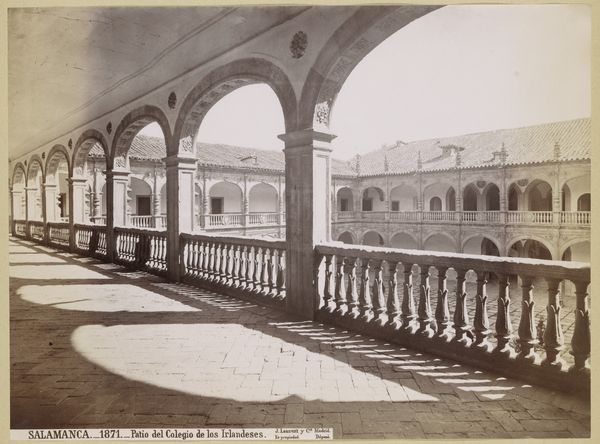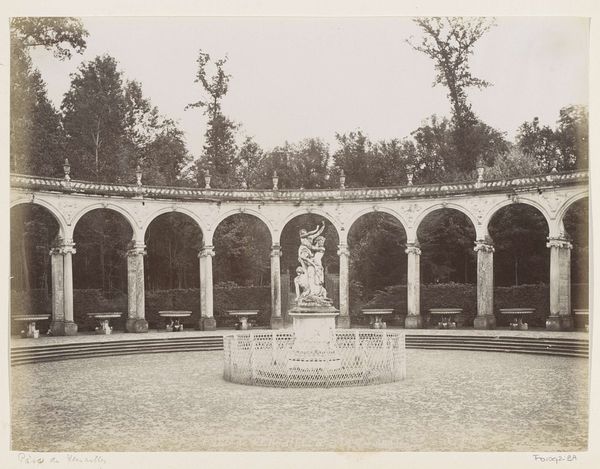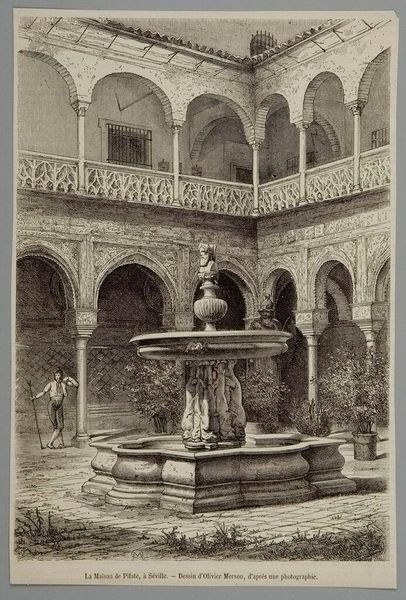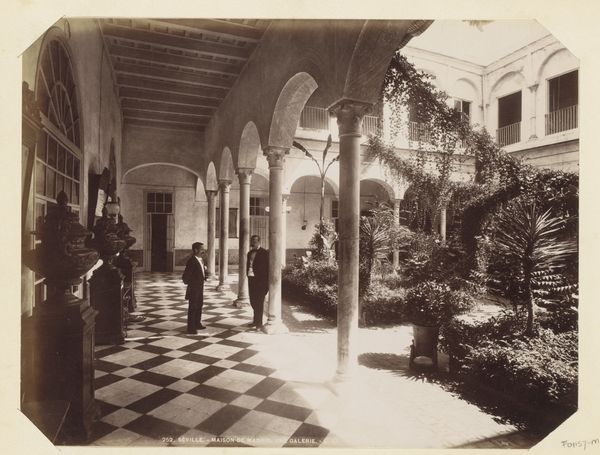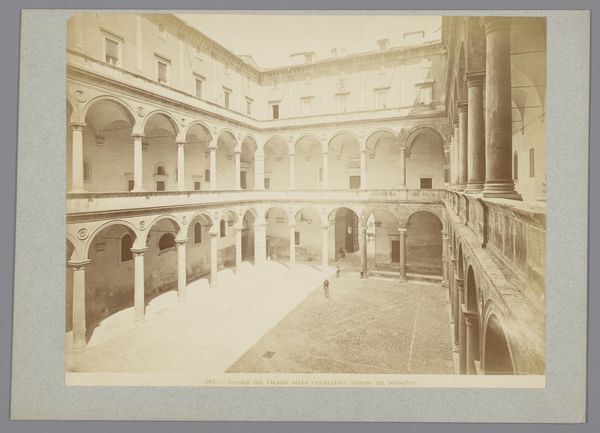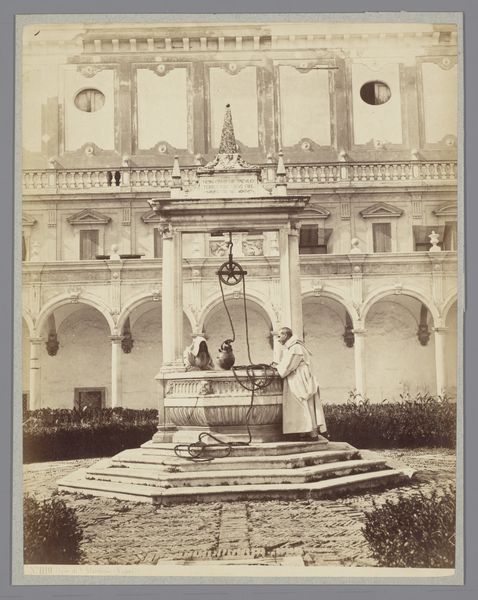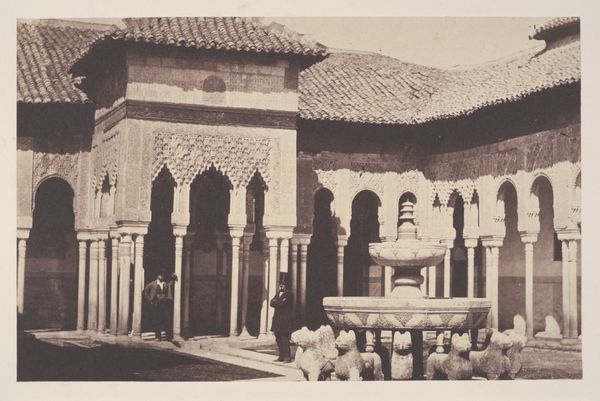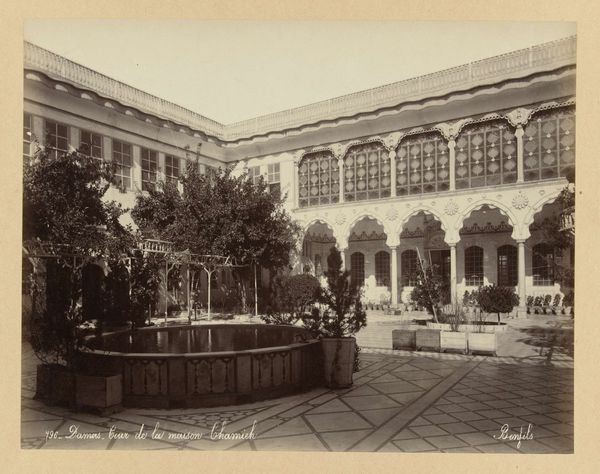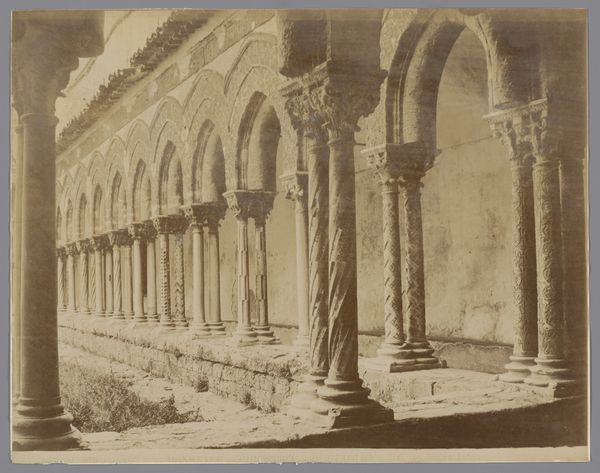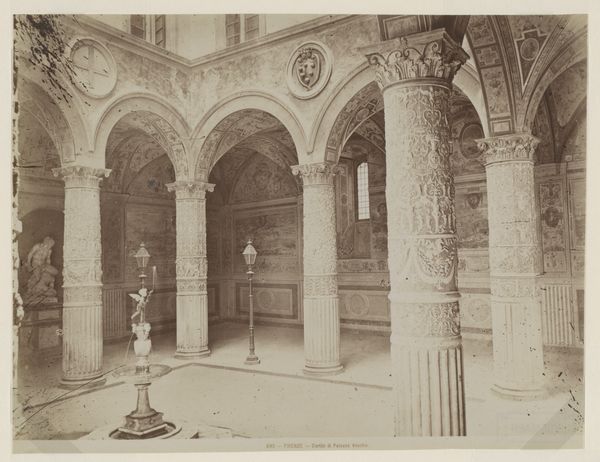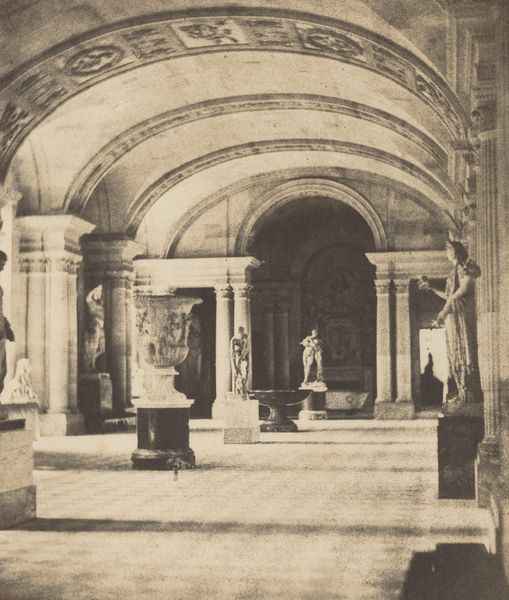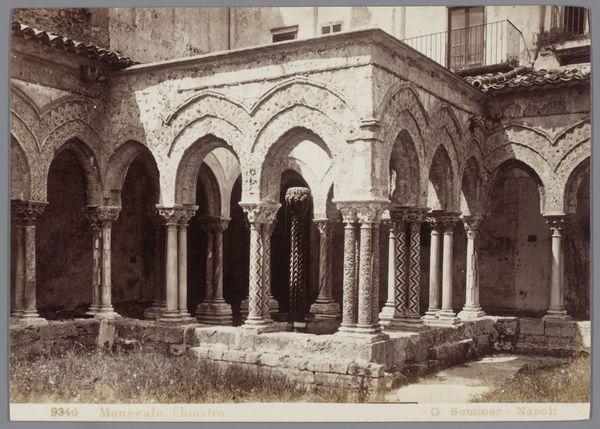
Espagne. Seville, Cour de la Maison Du Duc De Medina Celi dite Maison de Pilate 1853
0:00
0:00
Dimensions: image/sheet: 40.1 × 28 cm (15 13/16 × 11 in.) mount: 60 × 46.6 cm (23 5/8 × 18 3/8 in.)
Copyright: National Gallery of Art: CC0 1.0
Curator: Let's discuss this albumen print by Edward King Tenison, created in 1853, titled "Espagne. Seville, Cour de la Maison Du Duc De Medina Celi dite Maison de Pilate." Editor: What strikes me immediately is the cloistered serenity. The photograph offers a rather monochromatic composition, heightening the interplay of light and shadow in the courtyard. Curator: Precisely. The repetitive archways, both on the ground floor and the gallery above, create a powerful sense of depth and linear perspective. The photographer is clearly interested in the geometric structures, the balance, and the visual rhythm. Observe how the central fountain anchors the space, drawing the eye upwards toward the octagonal structure in the background. Editor: And how this representation of the courtyard allows us to consider how elites curate and contain space for themselves, right? Medina Celi's palace, a site for leisure, and, of course, display. The careful attention to detail highlights wealth and privilege in nineteenth-century Spain. The muted tones of the print subtly speak to the era, reminding me of broader colonial projects underway then, as photography captured images, memories, and knowledge that constructed the era's self-image. Curator: A sharp observation. Focusing on the materiality of the print, we can analyze the fine details captured through the albumen process. Note the texture of the stone, the intricate carvings around the arches. Photography was, after all, undergoing considerable development and innovation at that time. These material dimensions demonstrate Tenison’s formal command over a relatively new technology, making compelling aesthetic choices. Editor: Absolutely, it's impossible to overlook how even aesthetic choices are ideologically laden. For me, the image prompts critical awareness around the historical context—the construction of elite identity, colonial attitudes towards "capturing" a place, which are not divorced from considerations around the compositional choices themselves. It urges a dialogue, one that allows for more profound and complex analyses of art history within our present, increasingly connected world. Curator: I see your point; contextual and formal qualities co-exist, creating more complexity. Editor: And prompting reflection—as art should.
Comments
No comments
Be the first to comment and join the conversation on the ultimate creative platform.
